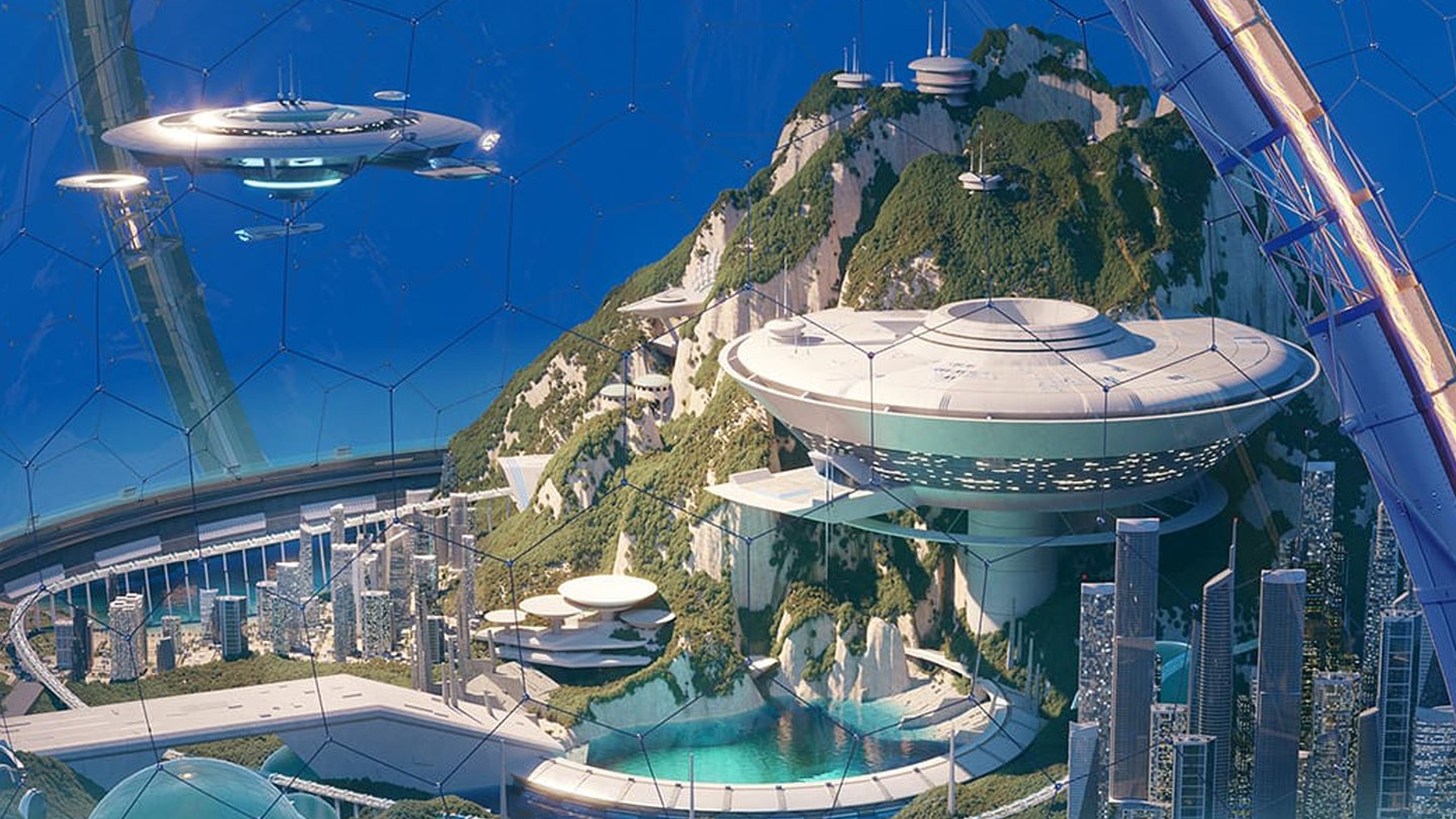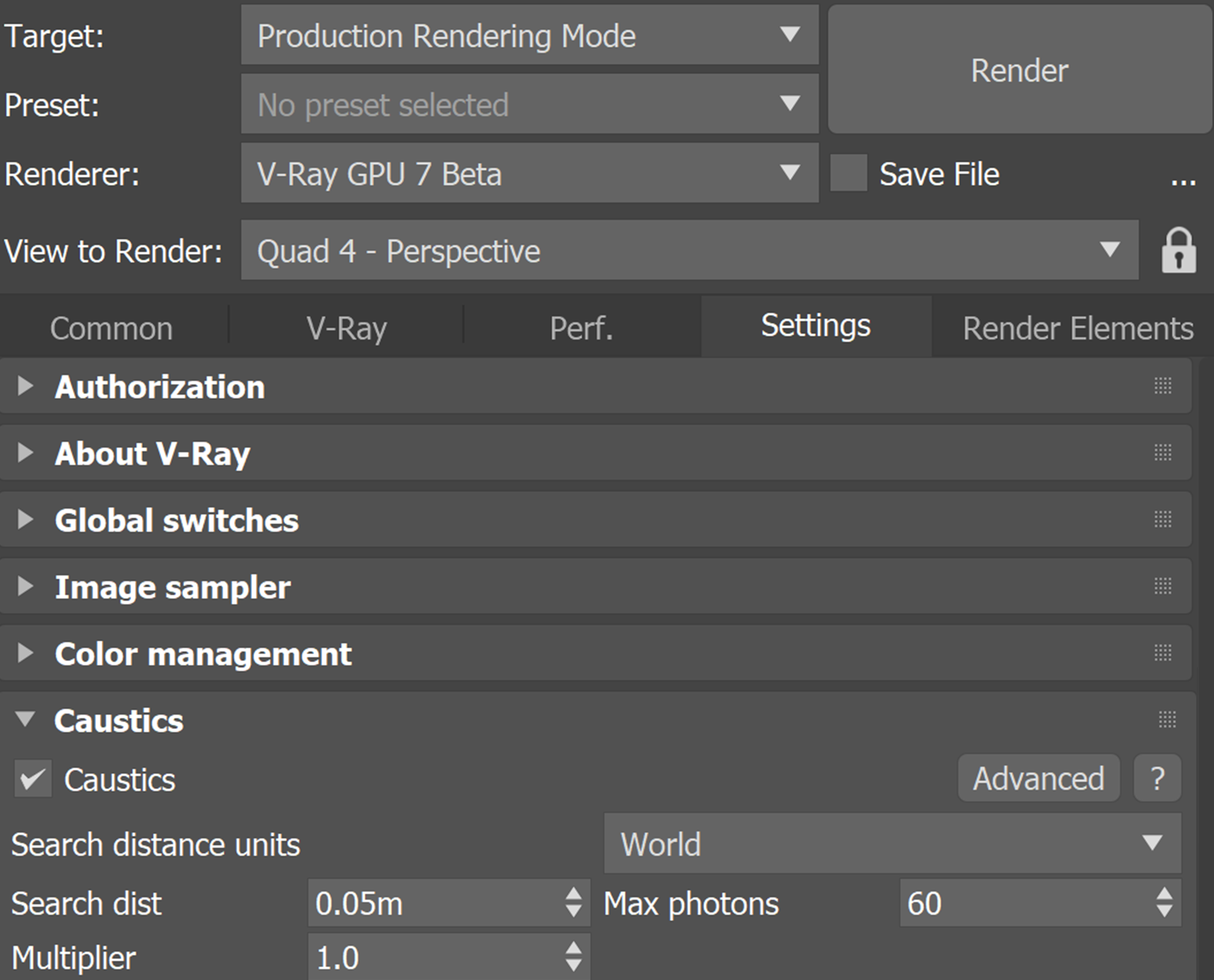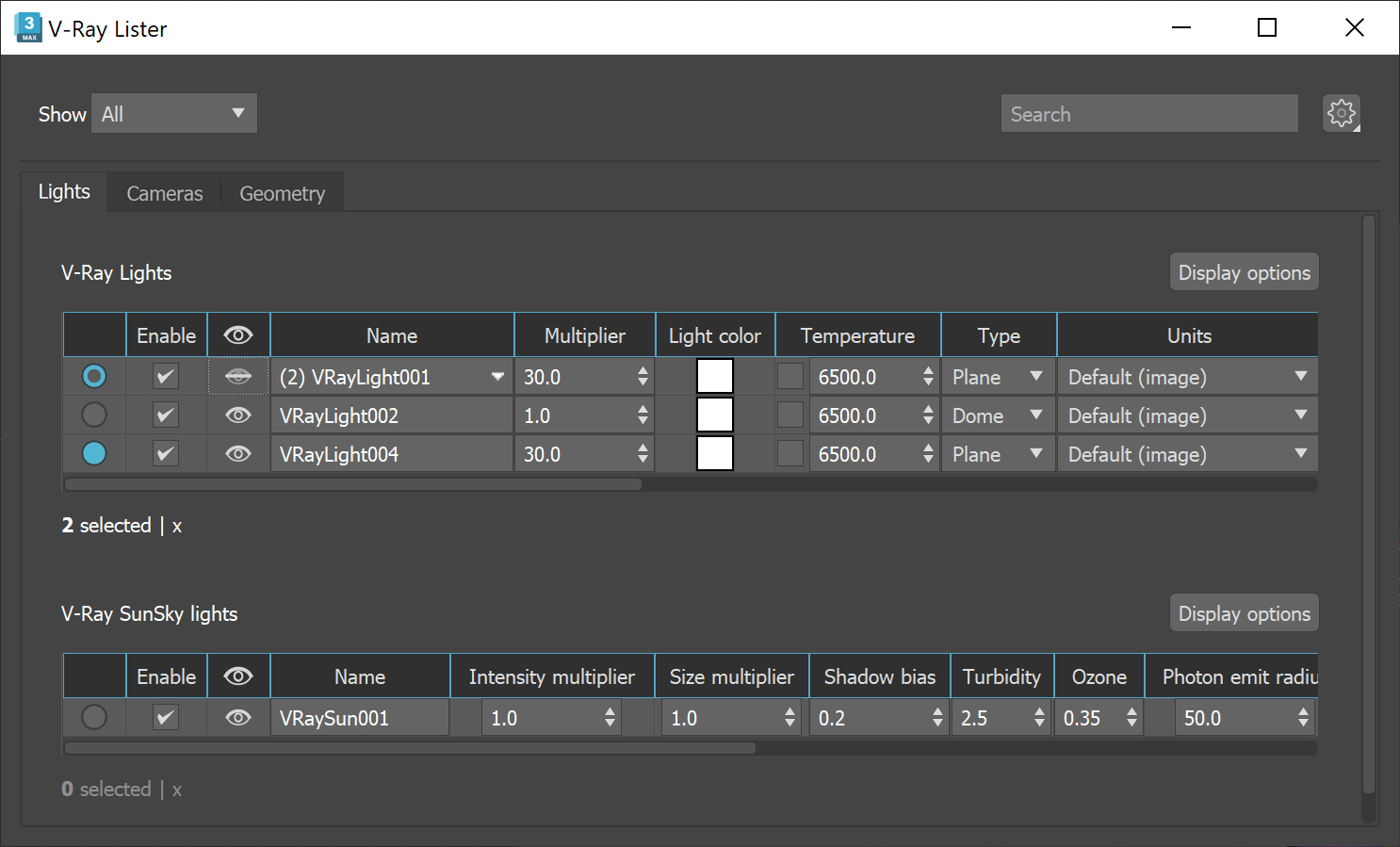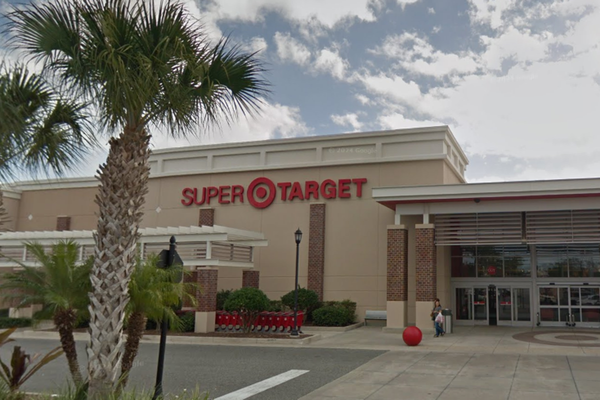
Price V-Ray Solo, £33 per month for annual license. V-Ray Premium, £47 per month for annual license.
OS Linux, Windows, and Macintosh
Developer Chaos
Release Out now
Features Gaussian Splatting, GPU caustics, Light Lister improvements
V-Ray 7 is finally here, and it's still one of the few 3D packages that have maintained a simple numbering system rather than releasing annual updates. V-Ray is still in the best overall position in our best rendering software guide and I haven’t seen anything in the past year to cause its position to be questioned.
In my V-Ray 6 review, I labelled it ‘Photorealistic ray-traced rendering at its best.’ The inclusion of Chaos Scatter and Chaos Cloud made it one of the most well-rounded renderers on the market and its strengthening shows no sign of losing momentum.
With V-Ray 7, released in beta for 3ds Max in September 2024, we're treated to a range of updates and improvements, but I would say only one feature is really worth mentioning. What is it, I hear you say? It’s support for Gaussian Splatting, and I’m personally very excited. What was possible with plugins is now achievable natively in V-Ray 7.
V-Ray 7 review: what is it?

V-Ray is a renderer that plugs into 3ds Max, SketchUp, Maya, Rhino 3D, Autodesk Revit, Unreal Engine 5, Cinema 4D, Houdini, and Blender. It is now a part of the globally recognised Chaos Group, but was initially developed by a Bulgarian software company.
From humble beginnings, V-Ray has grown into one of the most popular rendering engines on the market, with 92 of the top 100 architecture firms using it as well as many of the largest film and visual effects companies.
V-Ray is probably best known for its ray tracing technology, which casts rays from a camera into the 3D scene before tracing them to their end destination. This includes changes in direction and properties caused by reflections, refractions, and bouncing off objects.
The rendering engine also provides a wide range of lighting types and controls for illuminating 3D scenes. It is even possible to create physically accurate lights by using files from lighting manufacturers. The plugin will run on all the major platforms, including Microsoft Windows, Mac OS X, and Linux.
Version 7 marks the beginning of a new line of updates that will be released under this version number. Chaos is likely to improve the new Gaussian Splatting feature as well as add feature support to GPU caustics.
V-Ray 7 review: how is it to use?

I’ve always found V-Ray relatively straightforward to use. This confidence has come as a result of a relatively intuitive interface as well as an abundance of online support through Chaos as well as third-party training. I can’t pretend that there haven’t been times where I’ve struggled to get my head around a setting or two but if this never happens with software, then the reality is that it’s probably too basic.
V-Ray 7 is fantastic for entry-level users while still providing superb advanced tools that enable experts to push their work to the limits. In recent years, Chaos has done two things simultaneously. On the first hand, it's added more advanced tools with increased complexity and potential. On the other hand, Chaos has introduced more drag and drop tools and off-the-shelf libraries to simplify complex processes.
By doing this, I think Chaos has managed to keep most users happy while drawing in new crowds of users that want easy click-and-drag workflows. For more insight, read our interview with Chaos' Kam Star on the future of rendering and AI.
V-Ray 7 review: the new tools

V-Ray 7 has a selection of new tools, although by far the most significant is support for Gaussian Splatting. I enjoyed using the new version, although I was a little underwhelmed by the lack of more significant new features. Read on to find out more.
Gaussian Splatting The new version of V-Ray 7 for 3ds Max enables the rendering of Gaussian splatting models, which has taken the 3D industry by storm in the past couple of years. Gaussian splatting is a technique and method for scanning objects in the real-world and reconstructing them in 3D. This is all done through photos and videos. V-Ray now supports the native handling and rendering of these Gaussian splats.
Despite not being able to test this feature to its limits, I have been impressed by a number of other V-Ray users on YouTube who have shown what version 7 is now capable of in this area. I love the fact that a plugin is no longer needed although, for now, V-Ray lacks some of the richness provided through these plugins. I feel a general sense of pleasure that Chaos has chosen to adopt this technology. I'll be keeping an eye out for future updates to see what extra support is added.
Better support for caustics V-Ray has taken tentative steps to support caustics on the GPU. It’s not yet as comprehensively supported as the CPU, with a distinct lack of support for a range of global switches and anti-aliasing filters. This idea of introducing a half-baked feature is pretty common for not only Chaos but also other software companies. I'm not a huge fan of it as the feature release promises so much and yet under delivers in a production pipeline. That is definitely the feeling I was left with for GPU caustics.
Light Lister changes V-Ray’s Light Lister now includes a tab to add geometry as well as an include/exclude column. The additional ability to undo actions in the Lister is a welcome addition. These might seem like small changes but they will make a lot of difference in making workflows more efficient. I appreciated being able to achieve more in one place, significantly speeding up my lighting workflow.
Lighting additions and improvements The introduction of the V-Ray Luminaire light object allows artists to render light fixtures by loading their precomputed light fields from .plw files. This workflow guarantees the exact replication of light fixtures in virtual environments.
Other improvements see an update to the firefly removal algorithm, which removes those annoying bright pixels that can sometimes plague 3D images and videos. I am now so grateful to have this feature as it means I don't need to unnecessarily increase sample settings to try and remove them. I can see myself using this feature a lot in the future.
V-Ray 7 review: who's it for?

The V-Ray 7 renderer attracts one of the broadest range of users out of any renderer on the market. It is used by 3D visualisers, architects, designers, and artists, to name just a few. 3D Visualisers love the breadth of materials and lighting options that enable them to bring scenes to life while maintaining artistic control. They can do this using physical parameters or break away from realism to create cartoon-based work.
Architects with limited technical knowledge might prefer Chaos Vantage but for those wanting more control, V-Ray 7 provides all the required tools. If you're a product designer or involved in furniture design you'll find a lot to love in V-Ray 7, although some may prefer KeyShot.
V-Ray 7 is also universally popular thanks to the plugin being available for such a wide range of software. This includes 3ds Max, SketchUp, Maya, Rhino 3D, Autodesk Revit, Unreal, Cinema 4D, Houdini, and Blender.
V-Ray 7 review: what could be improved
For such an established renderer, it is hard to imagine what can be improved at this stage in time. This is not to say that V-Ray 7 has reached the pinnacle but there is always a push and pull between technological advancements and renderers who then have to catch up and add support. One example of this is with Gaussian Splatting. This is now supported in V-Ray but it still requires improvement.
Another new feature is caustics on the GPU but again, there are a lot of missing elements to the support. V-Ray 7 will need to address these before artists can truly rely on rendering this feature on the GPU.
V-Ray 7 review: Price
Chaos Group offers two main types of licenses: V-Ray Solo and V-Ray Premium. The first is ideal for individual artists who only want to use V-Ray and its core features. With this license, artists won’t have access to other Chaos tools such as Chaos Phoenix, Chaos Player, or Chaos Scans. V-Ray Solo costs £64 per month or if you’re happy committing annually, then you can get it for £33 per month.
The more comprehensive V-Ray license is V-Ray Premium, which costs £94 or the equivalent of £47 per month for the annual option. This includes everything in V-Ray Solo with the addition of Chaos Phoenix, Chaos Player, and Chaos Scans. You’ll also get 20 Chaos Cloud rendering credits.
V-Ray 7 review: buy it if
- You need an industry standard
- You want to render Gaussian splatting models
- You want a beginner-friendly renderer
V-Ray 7 review: don't buy it if
- You want a budget-friendly renderer
- You want sliders for all settings







